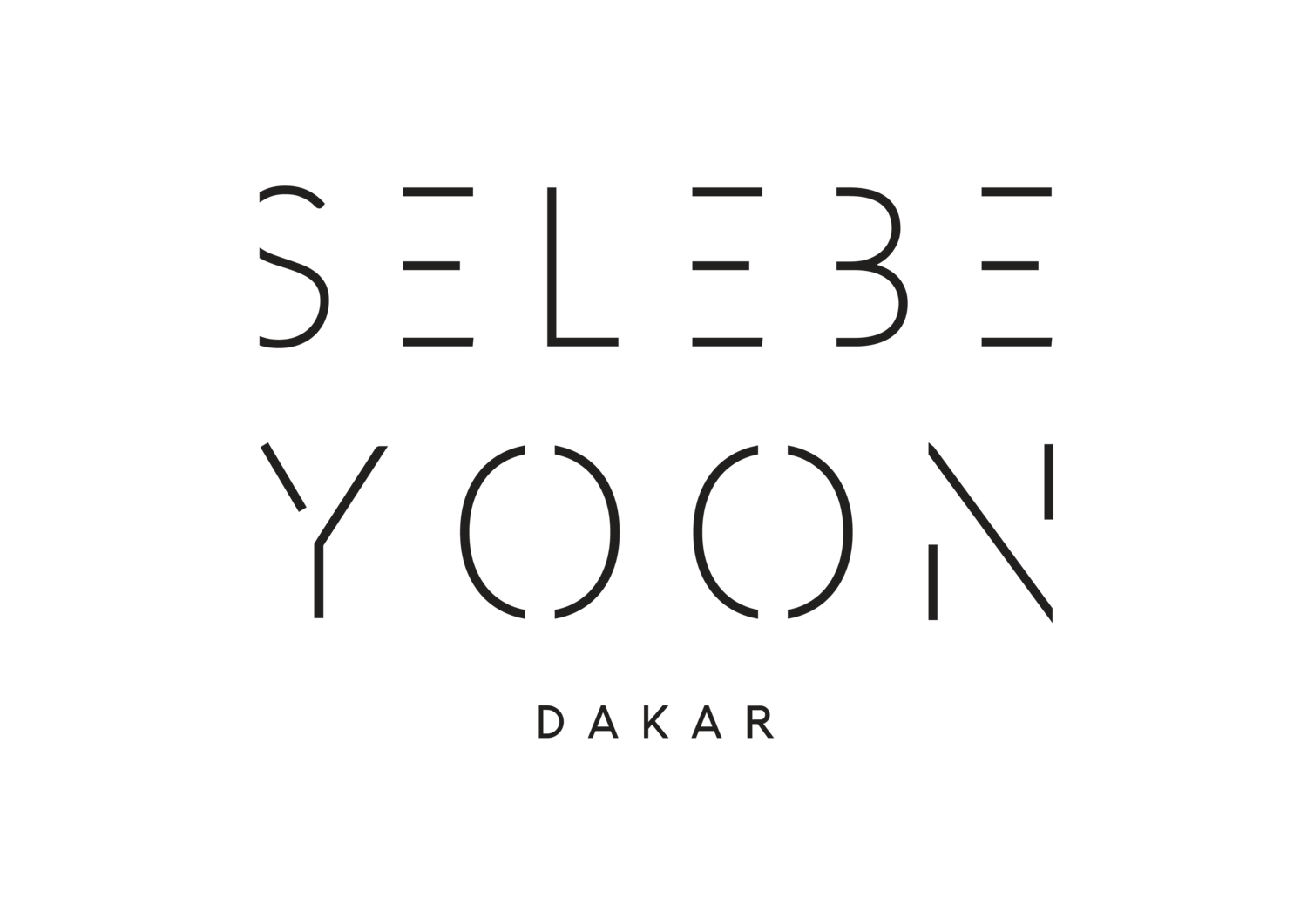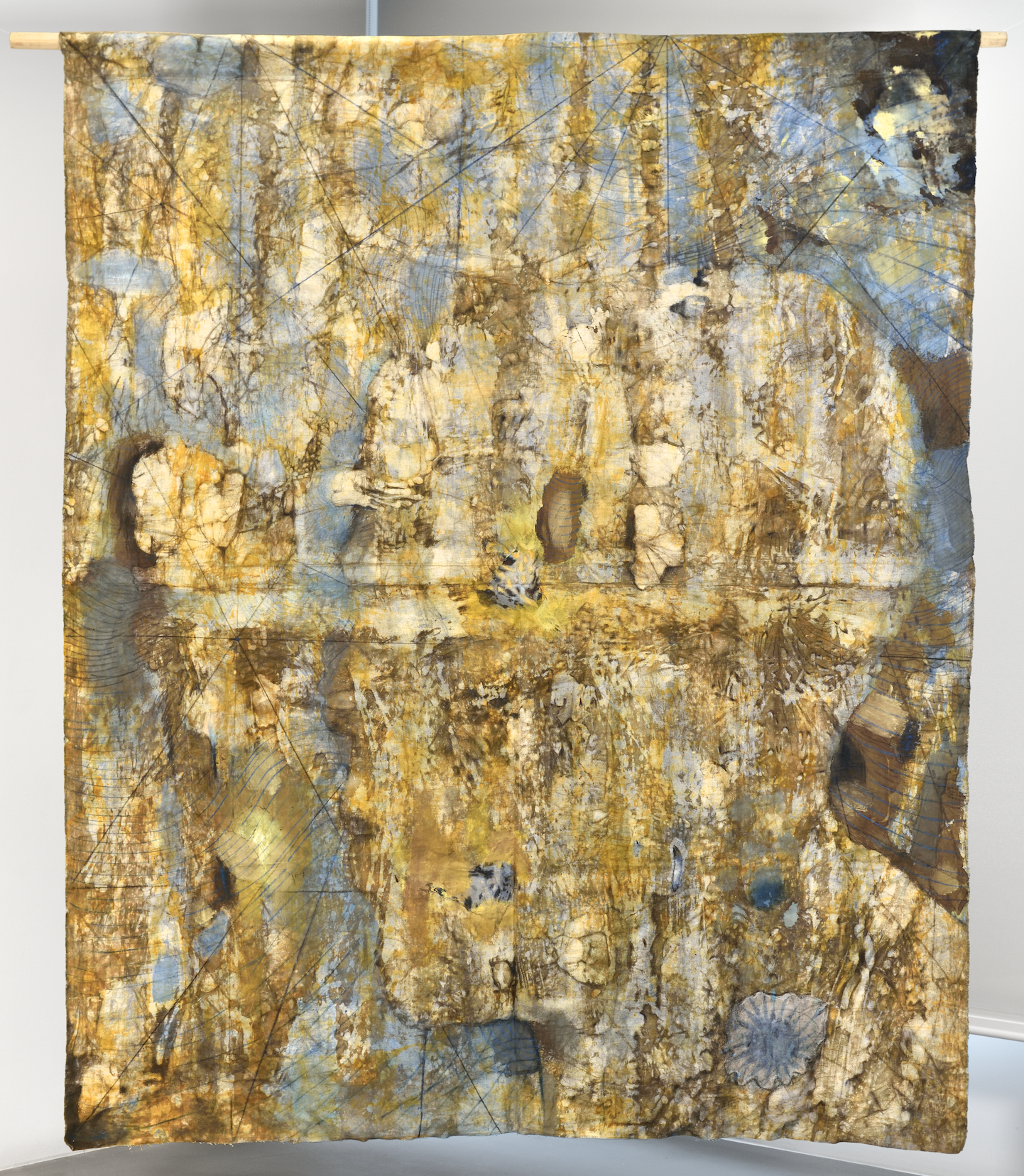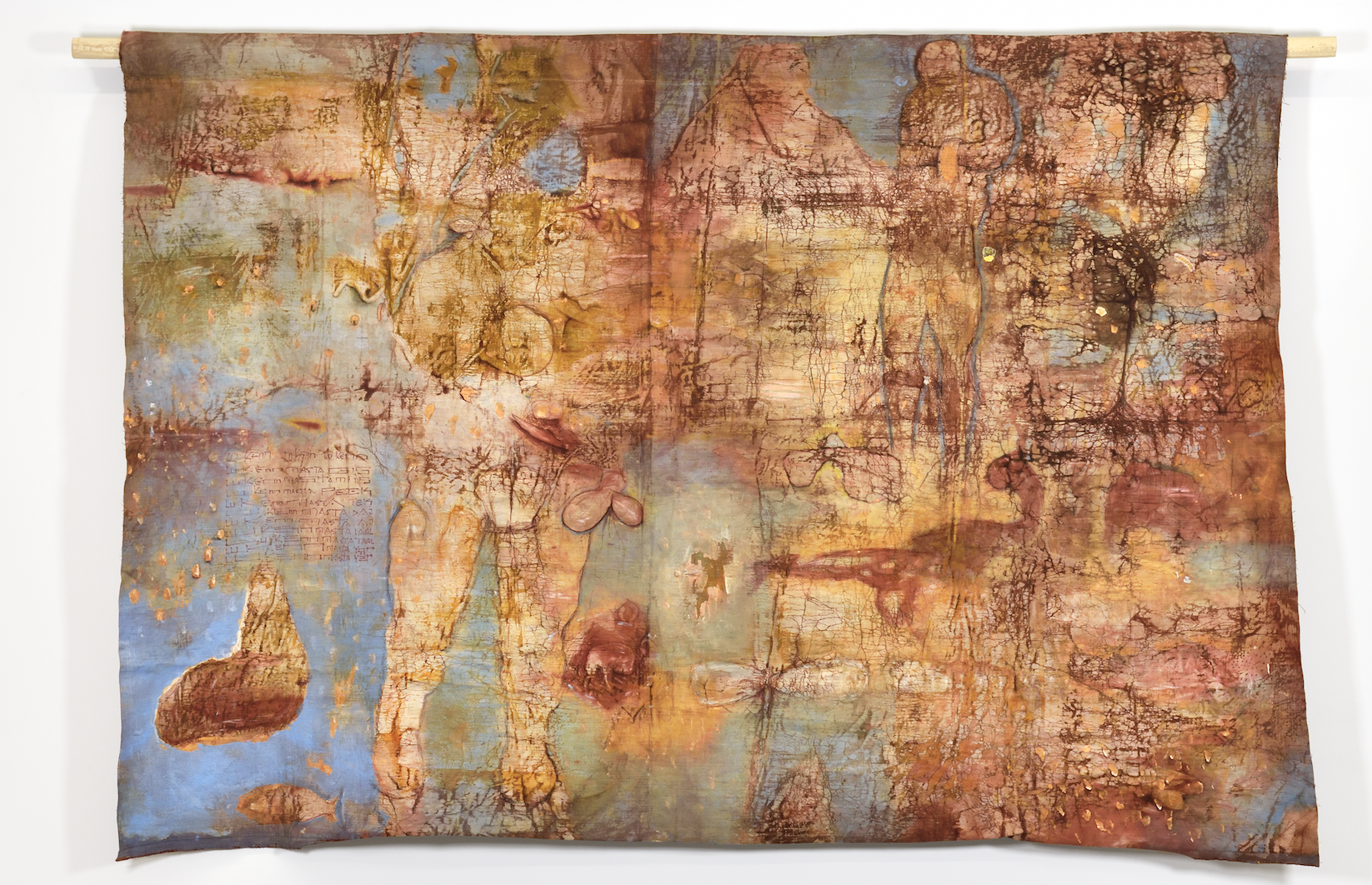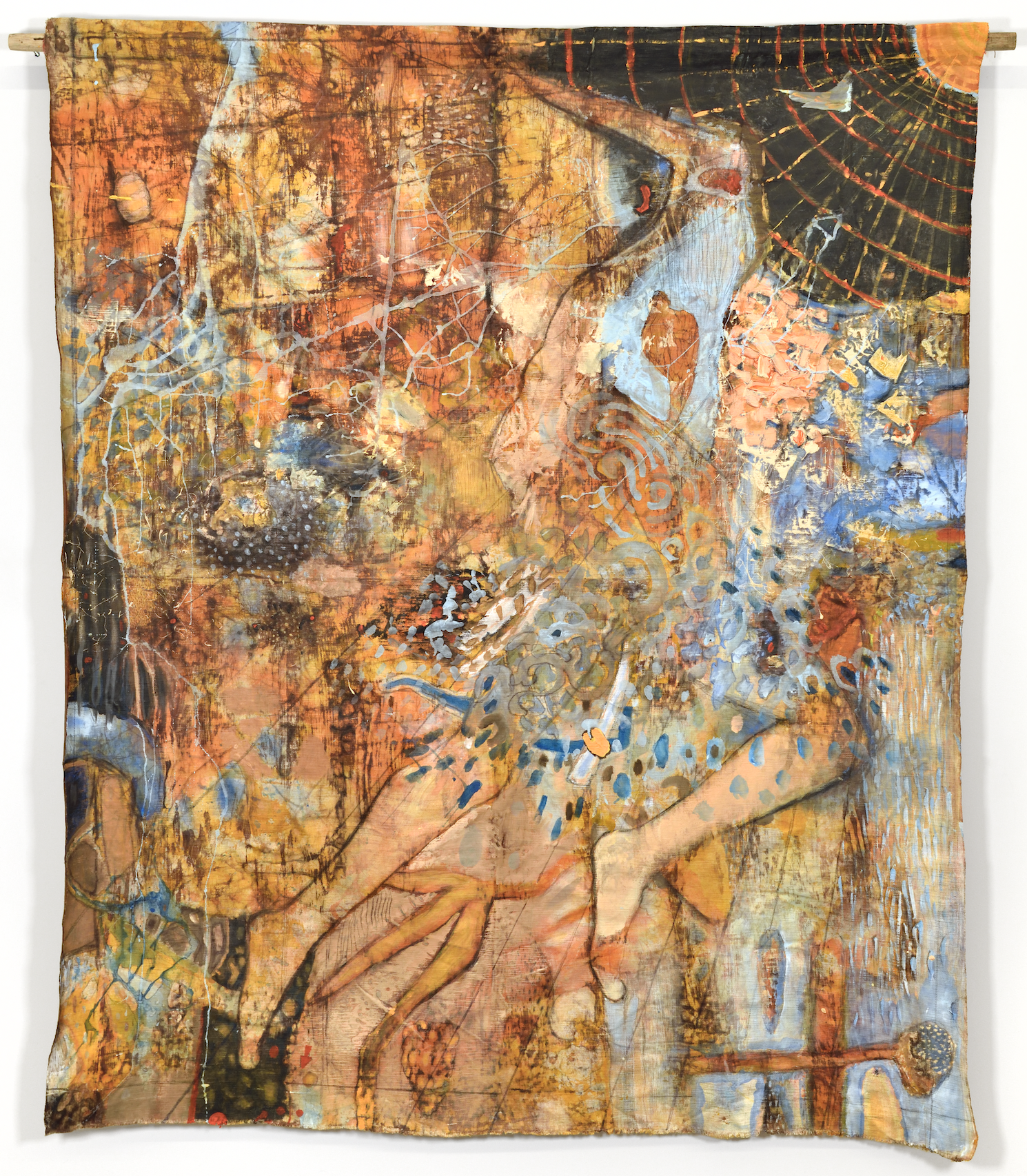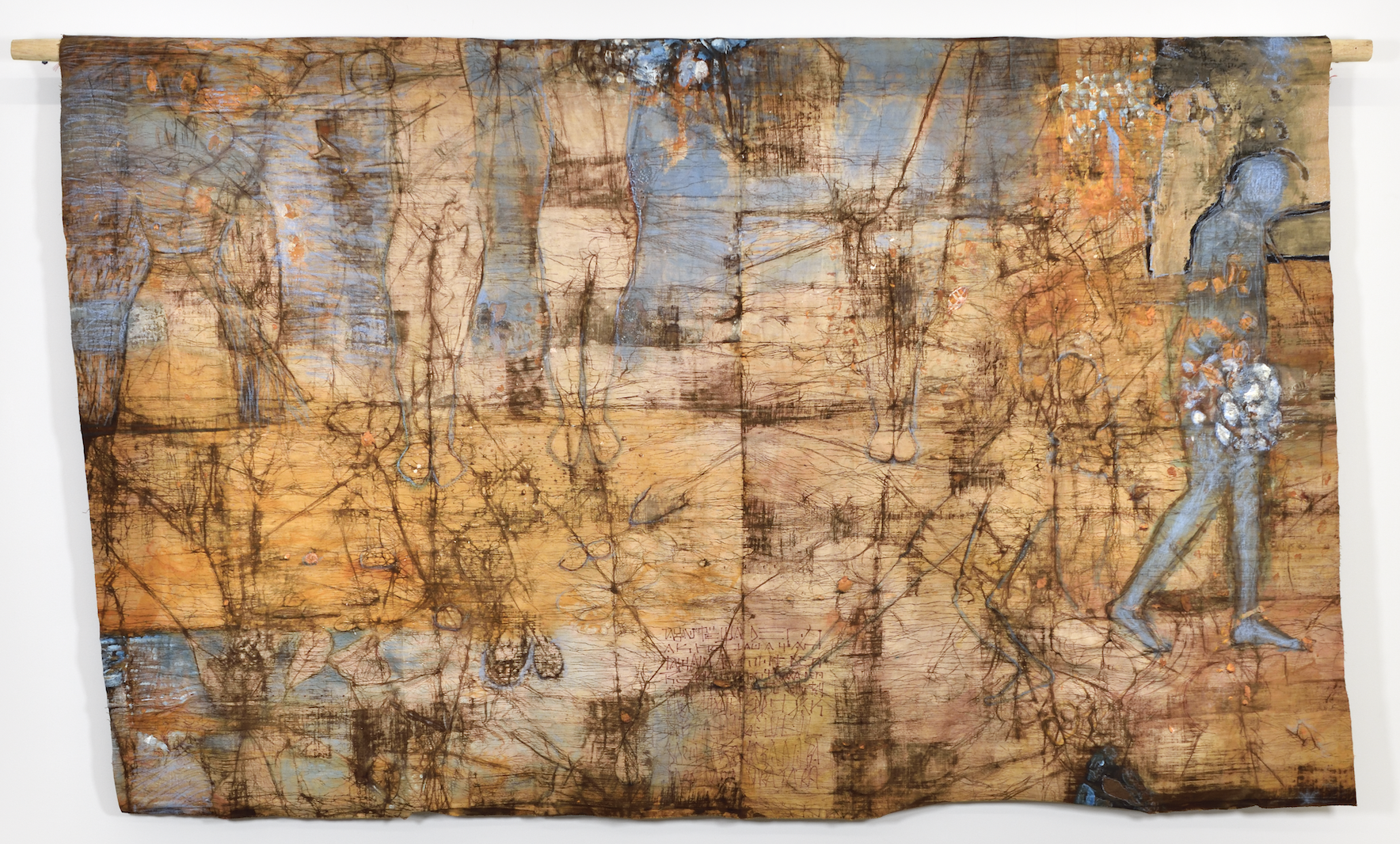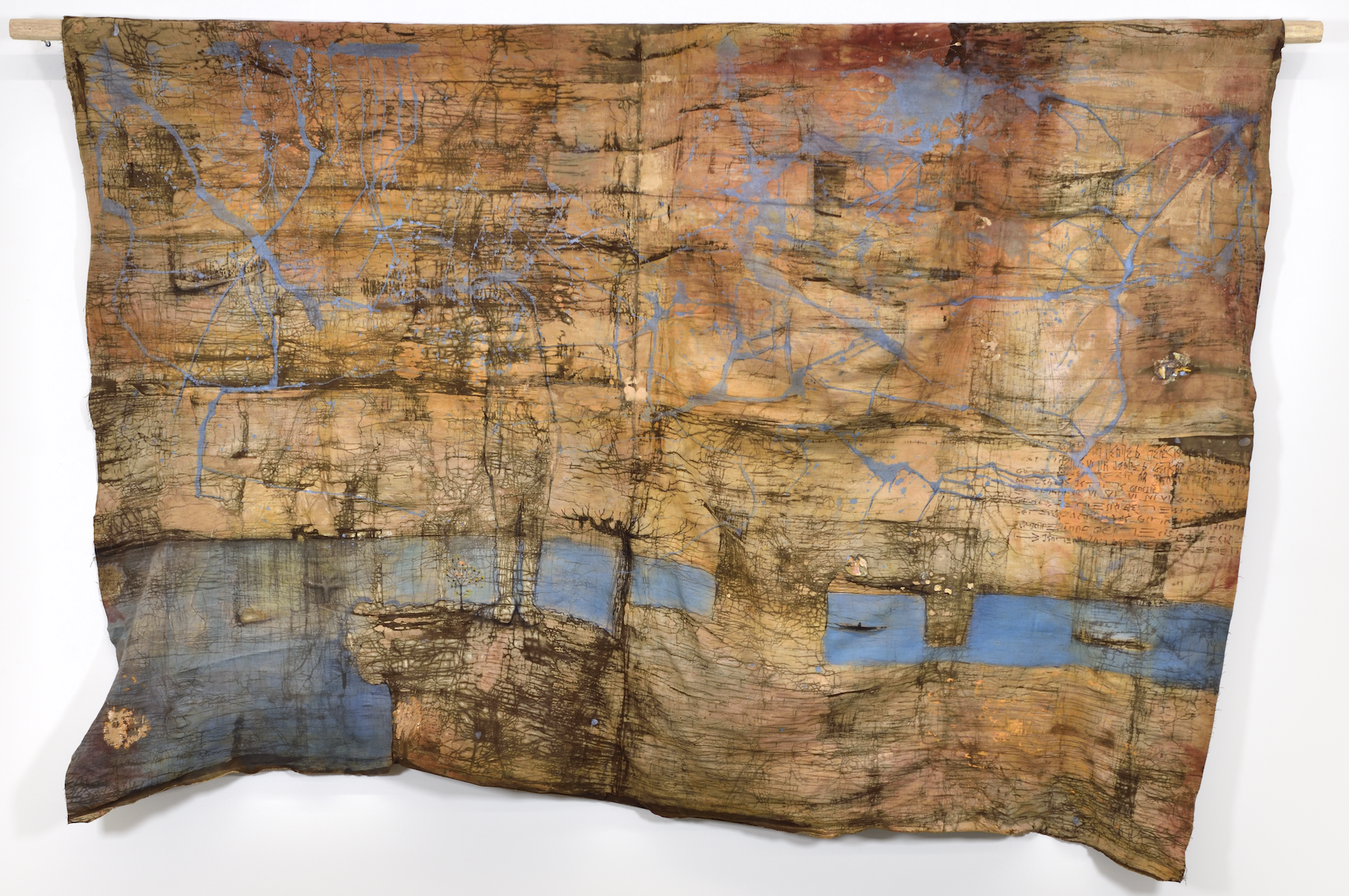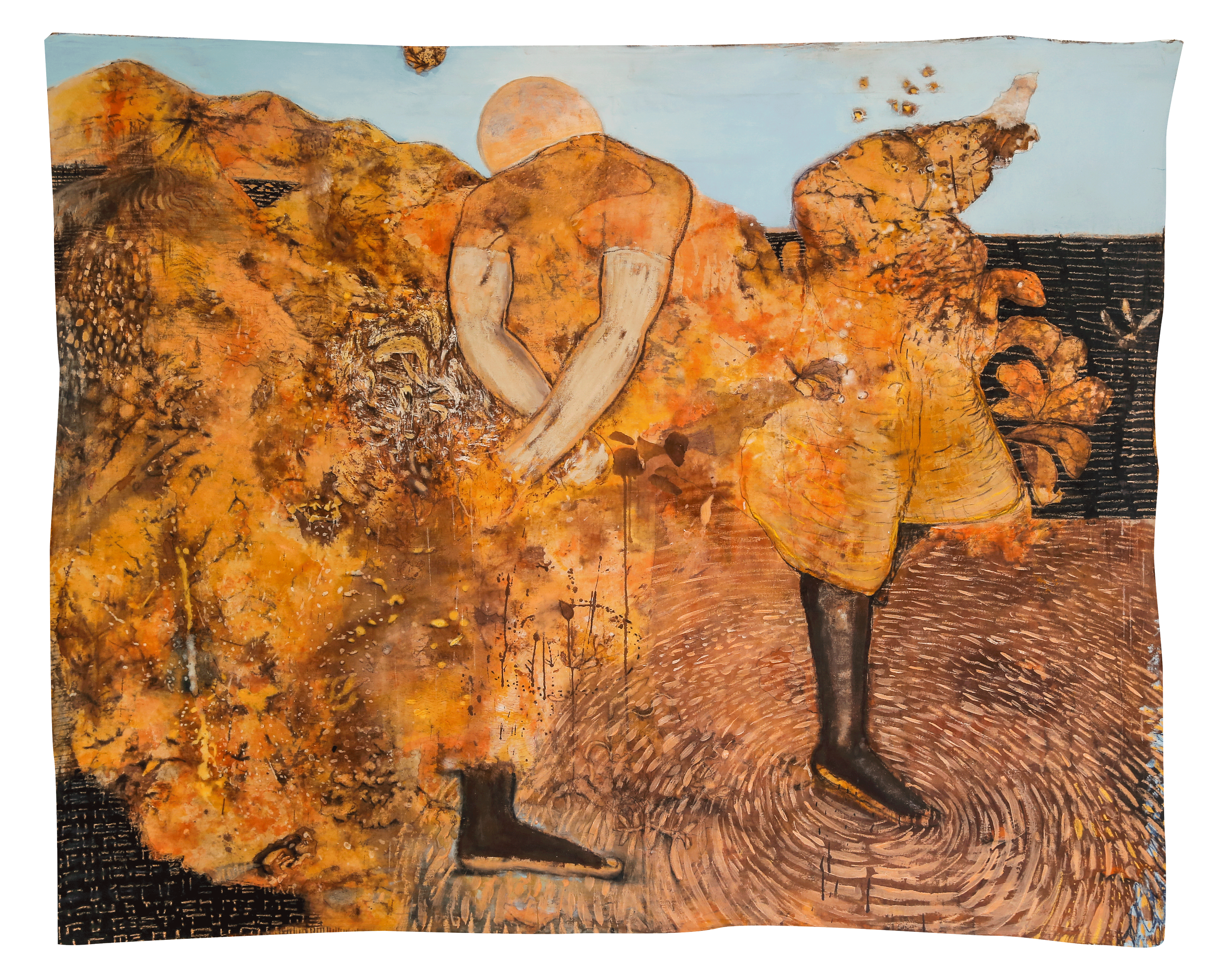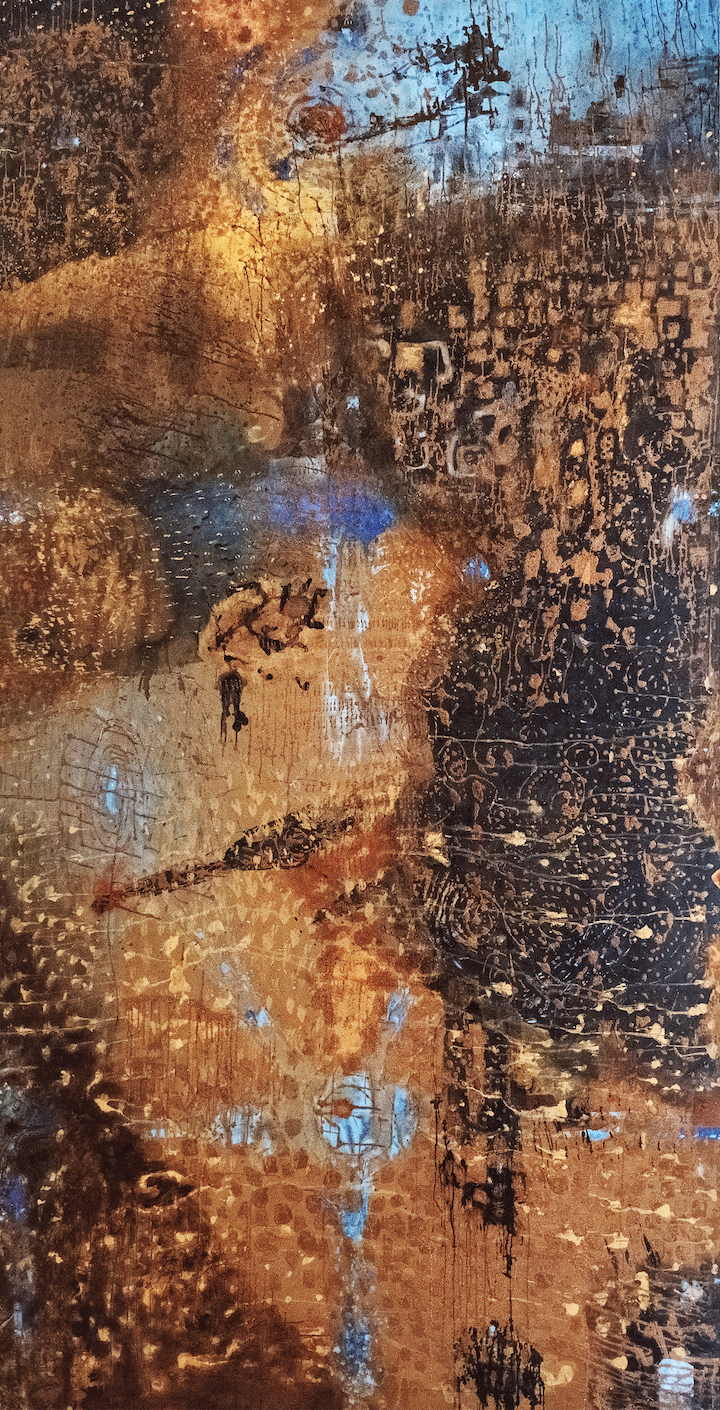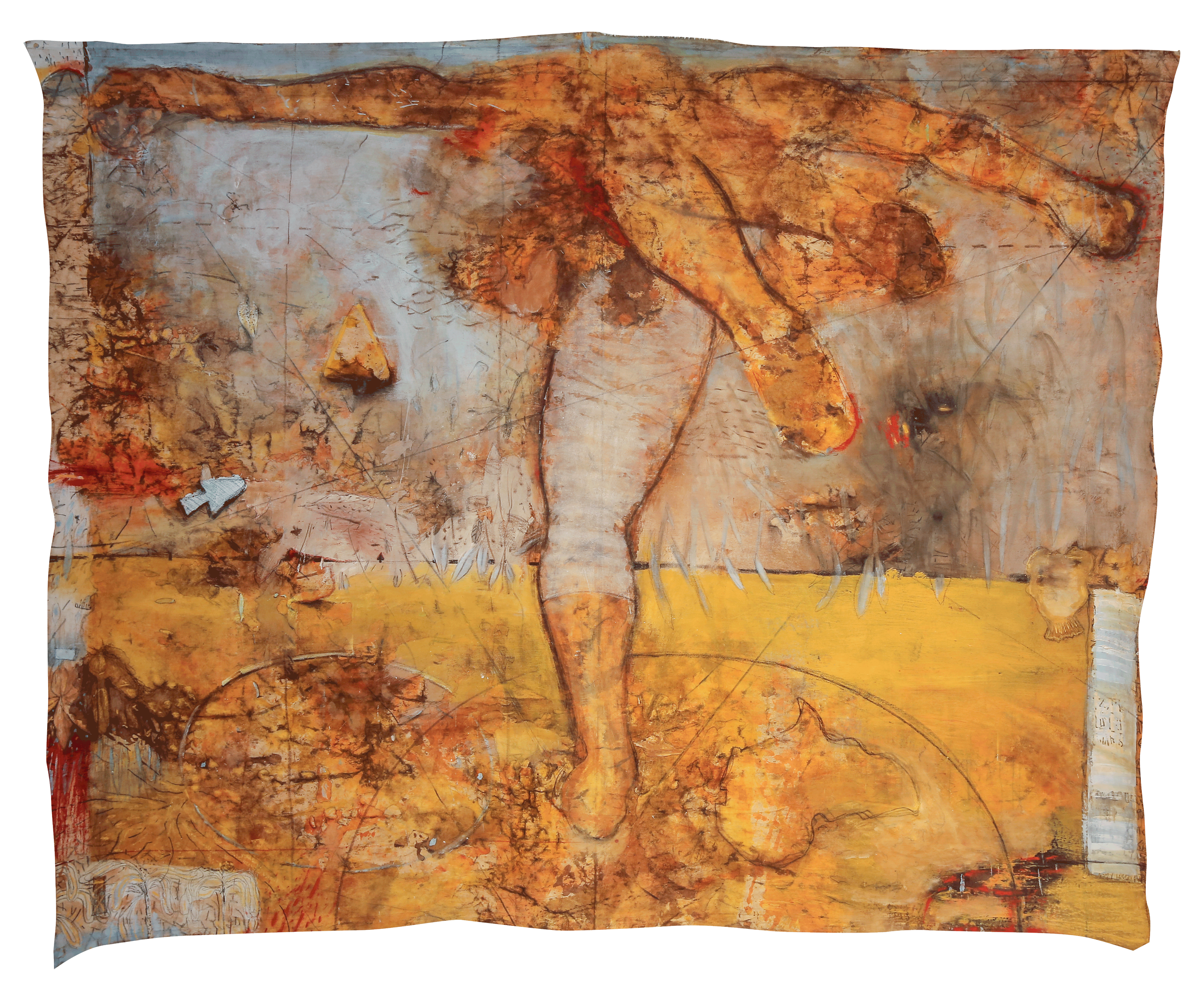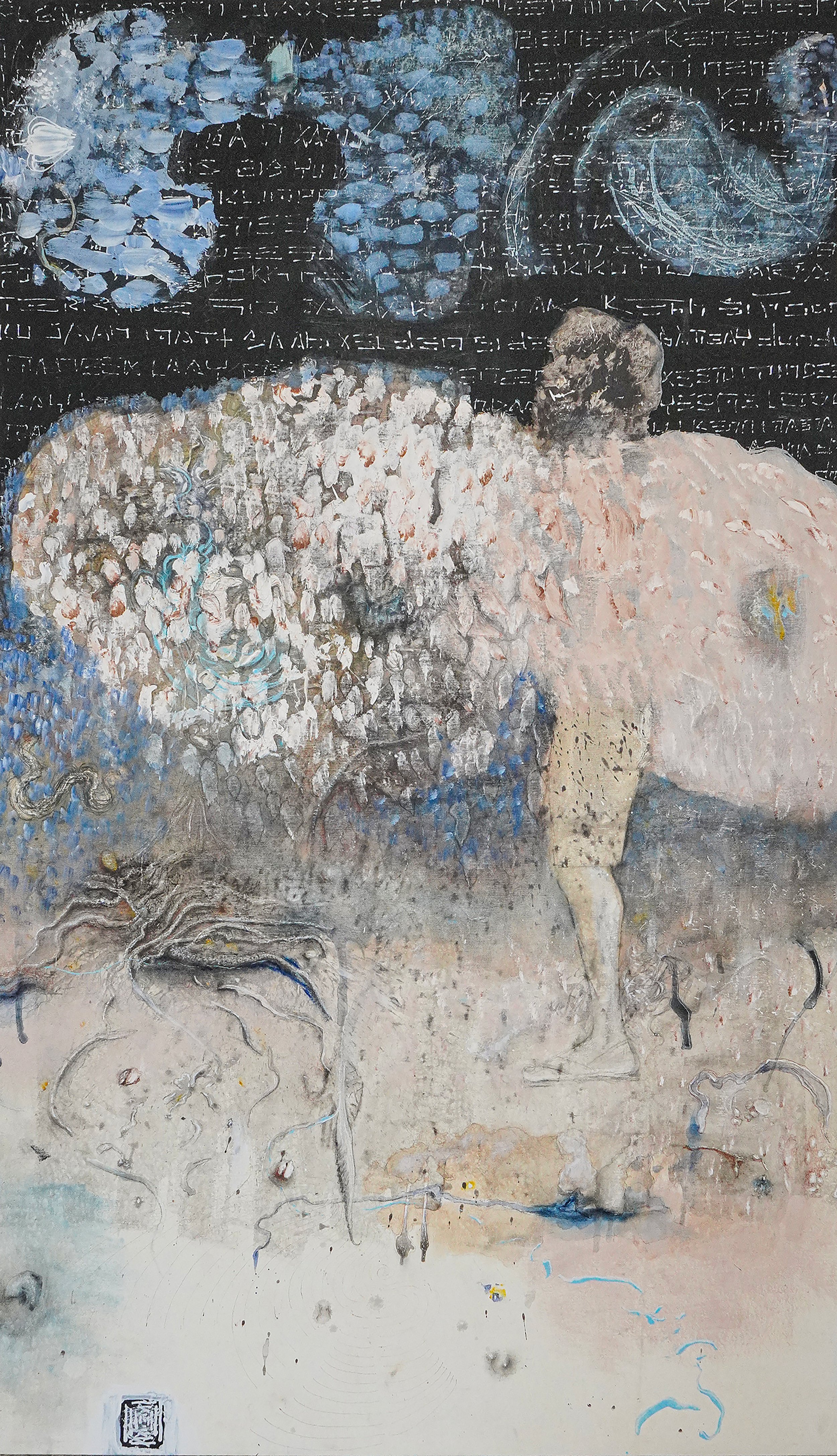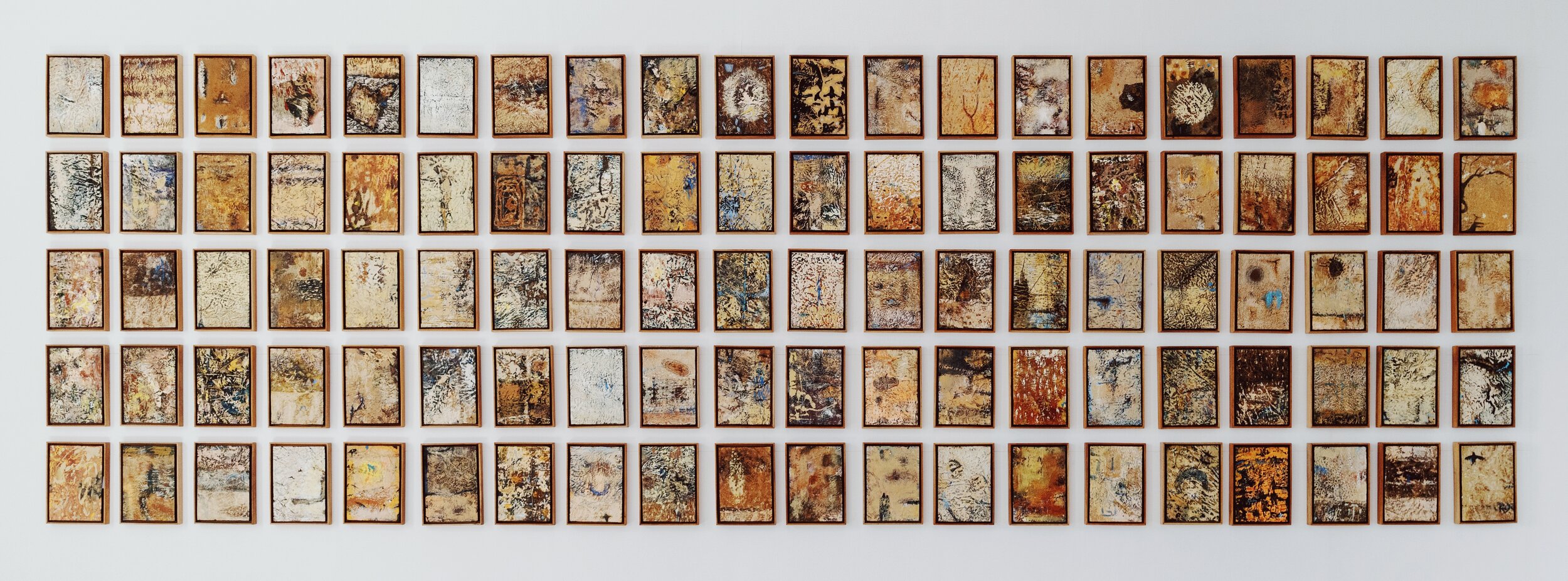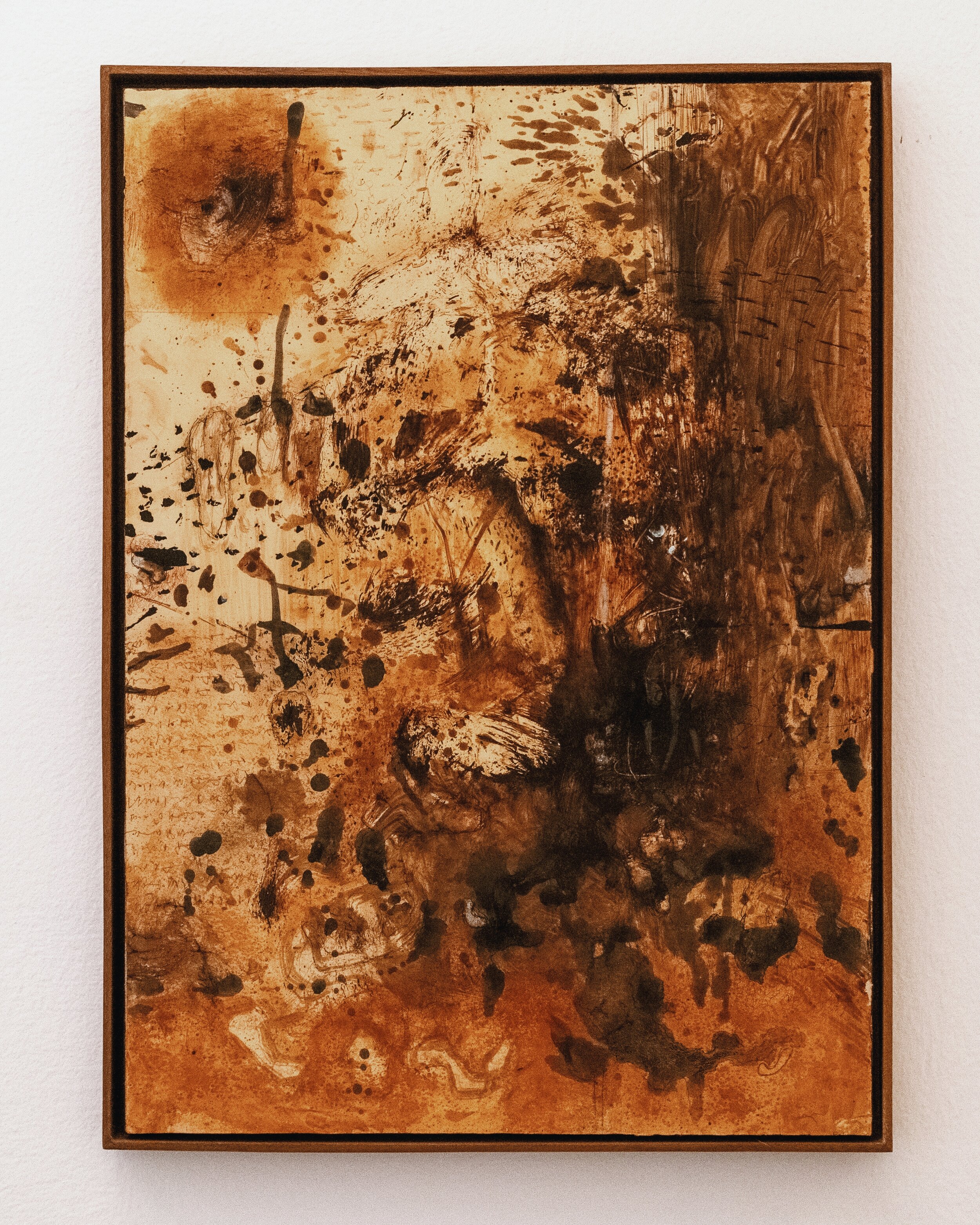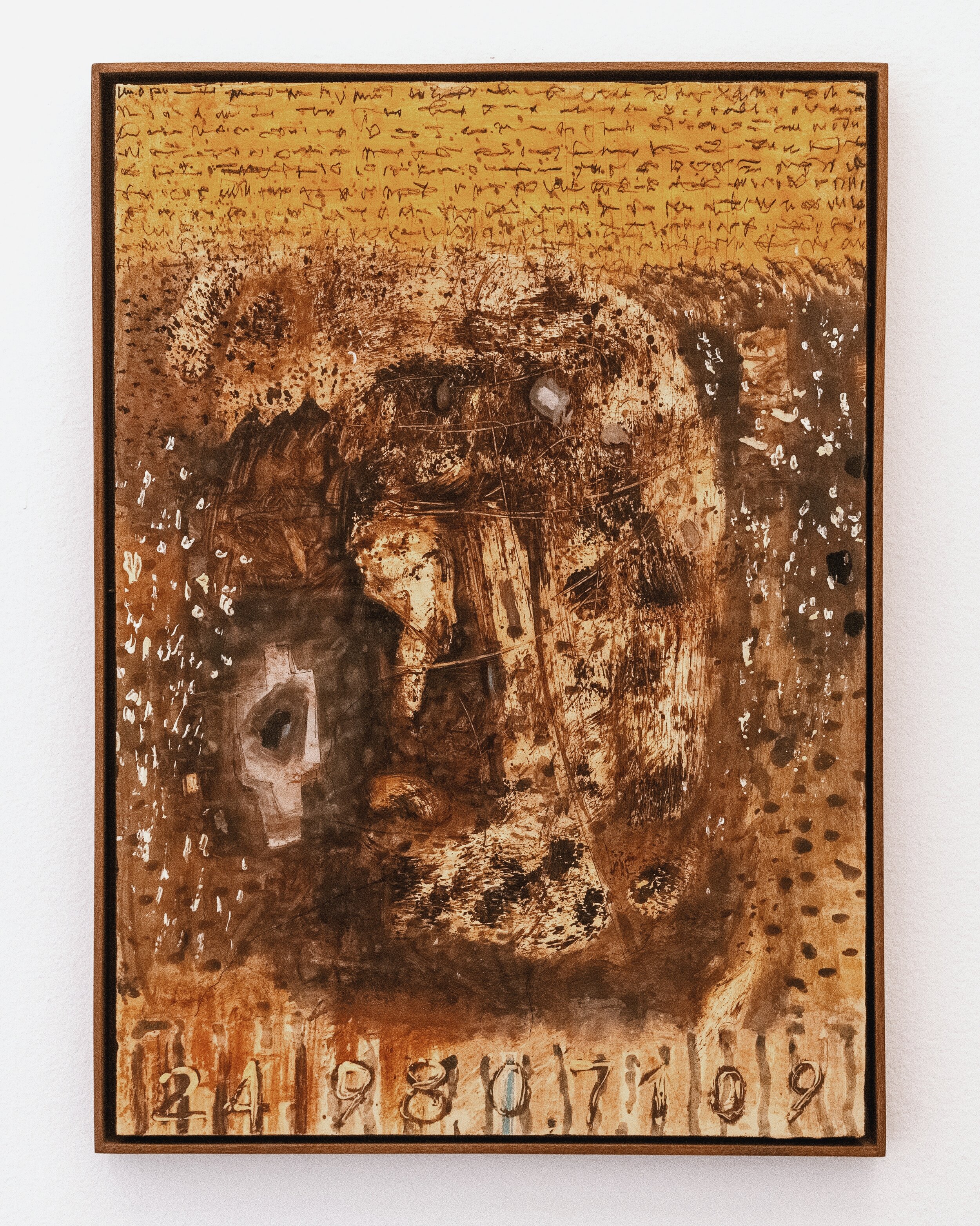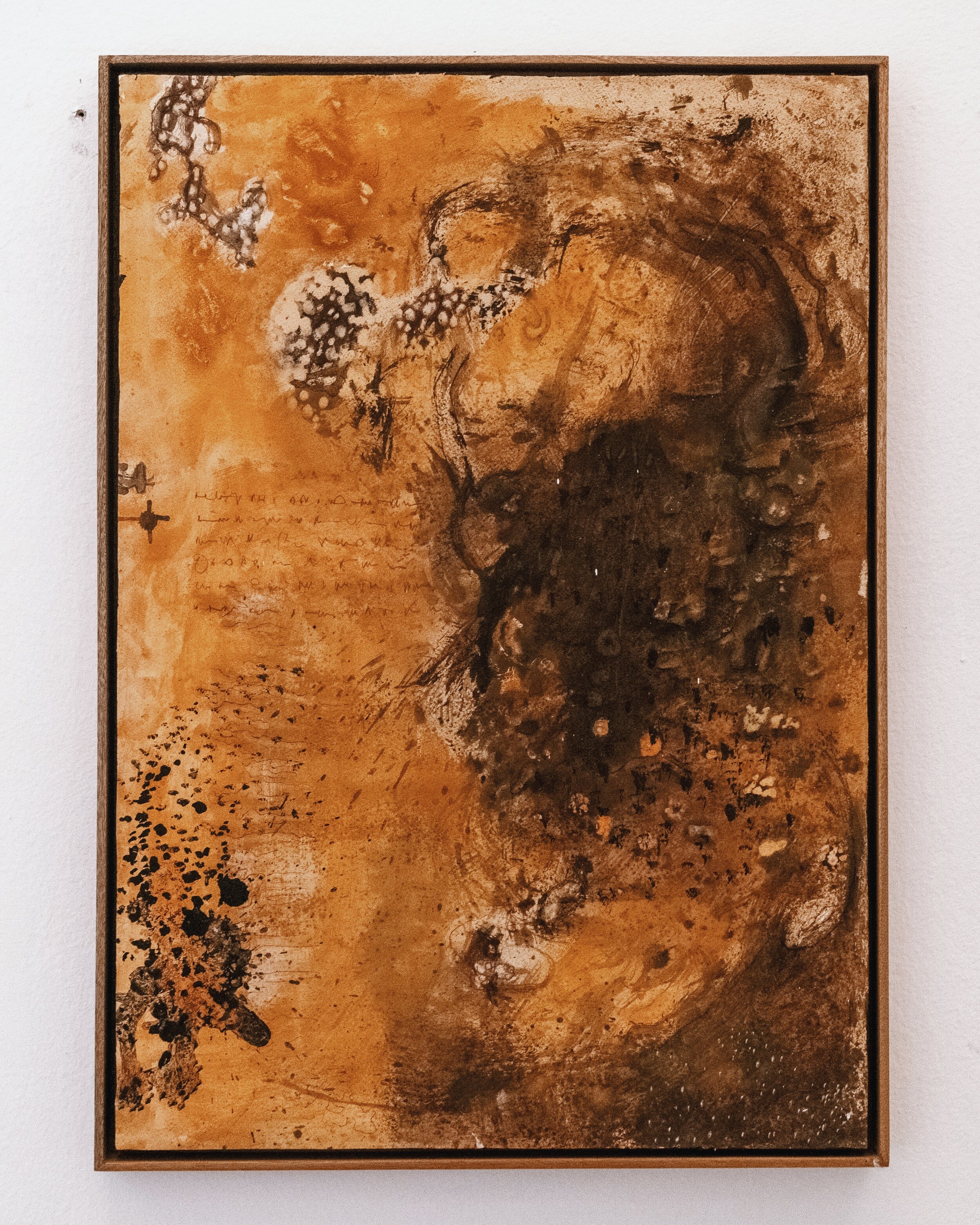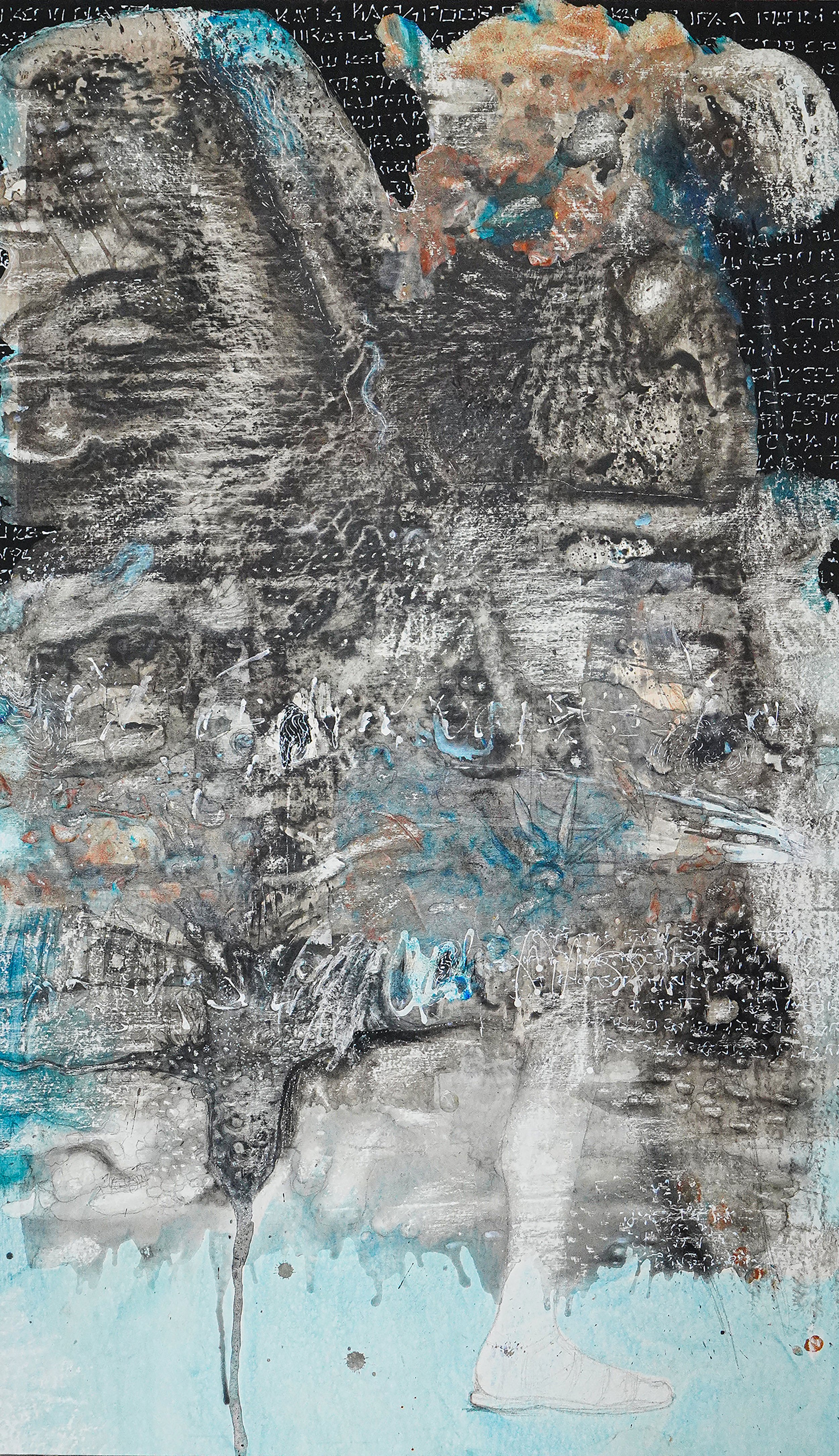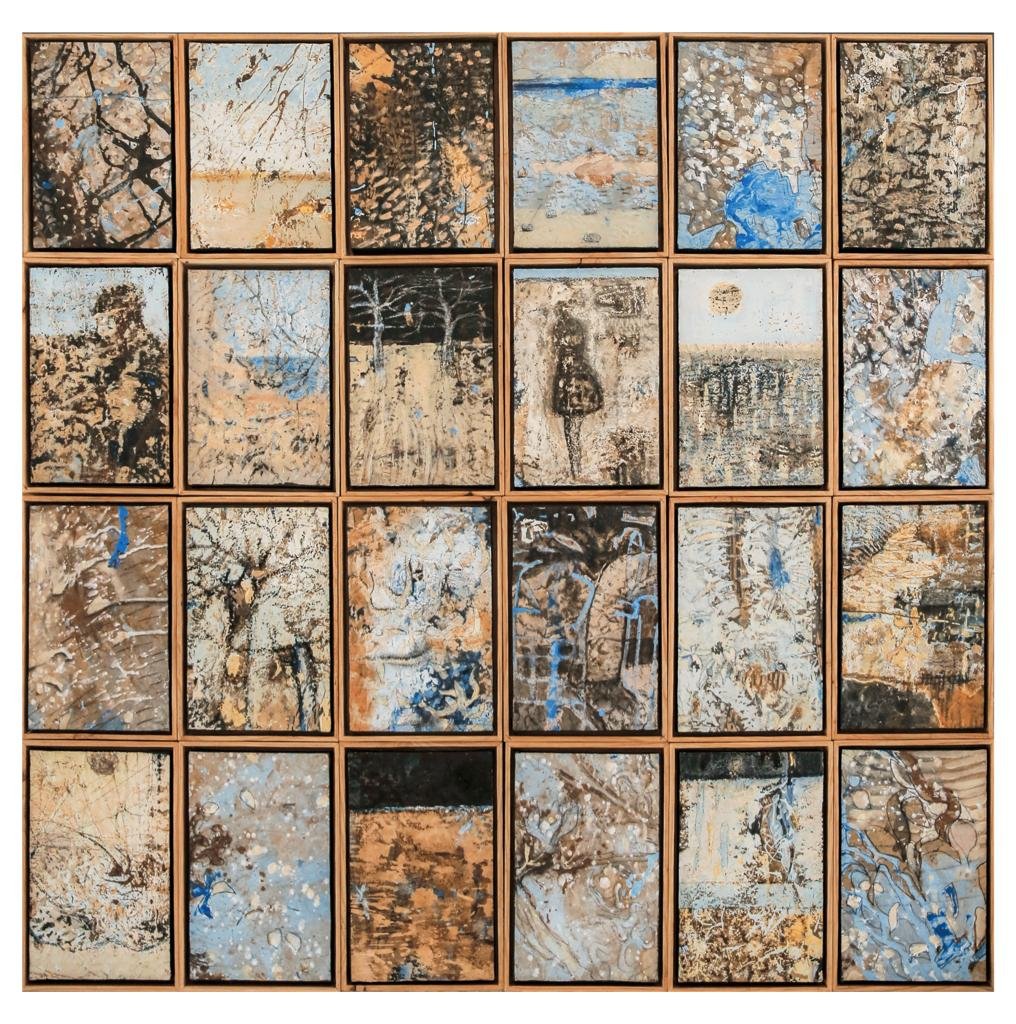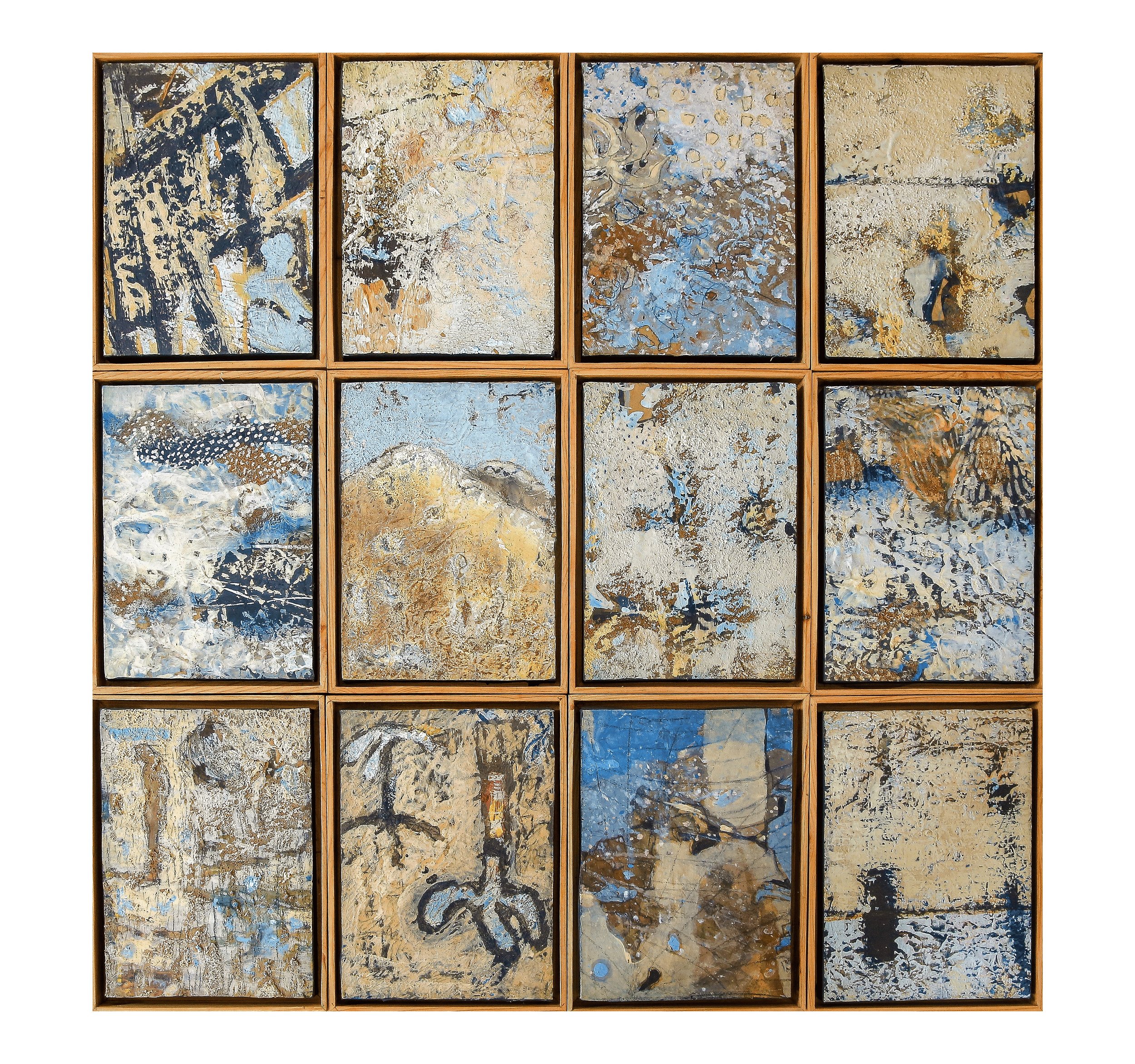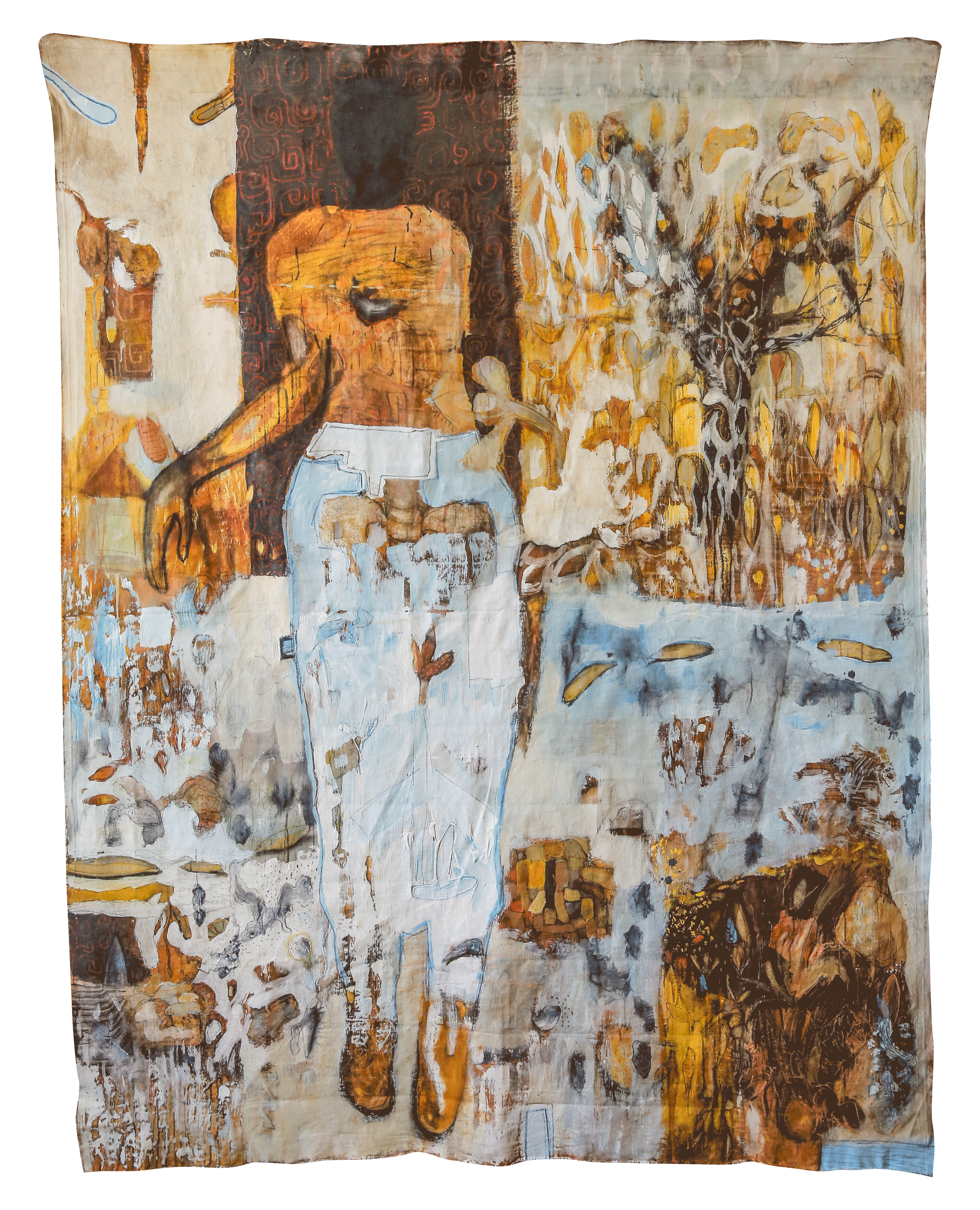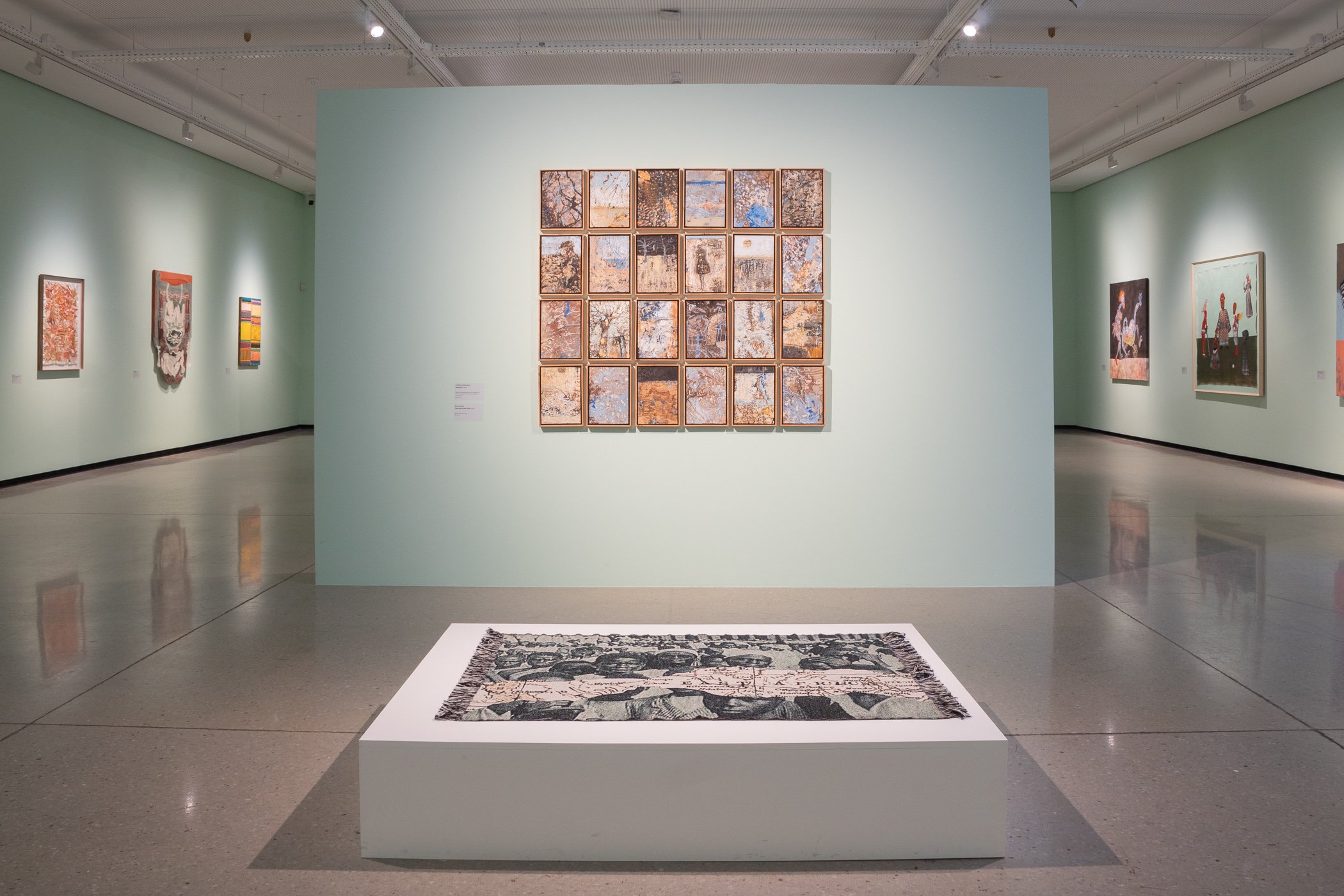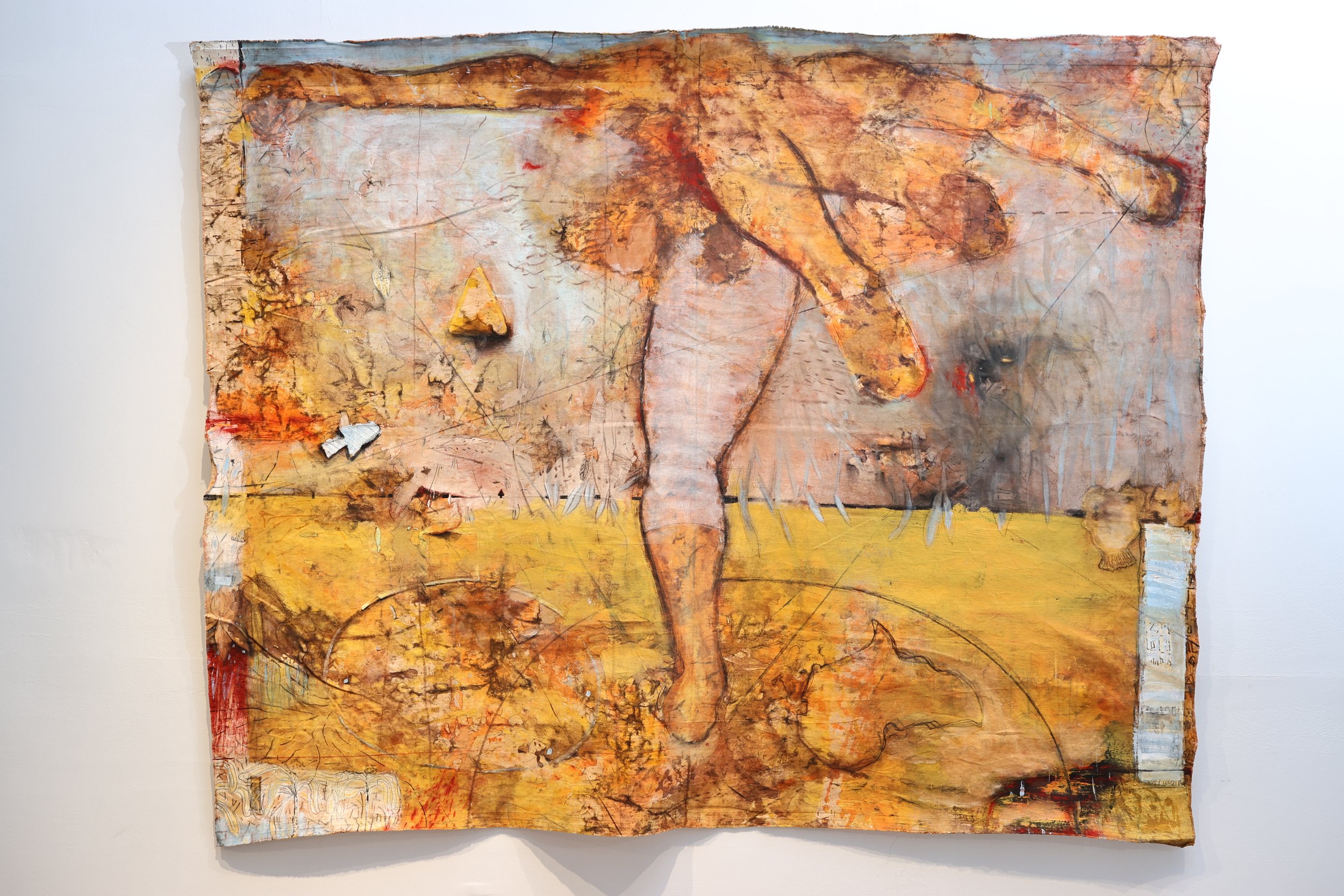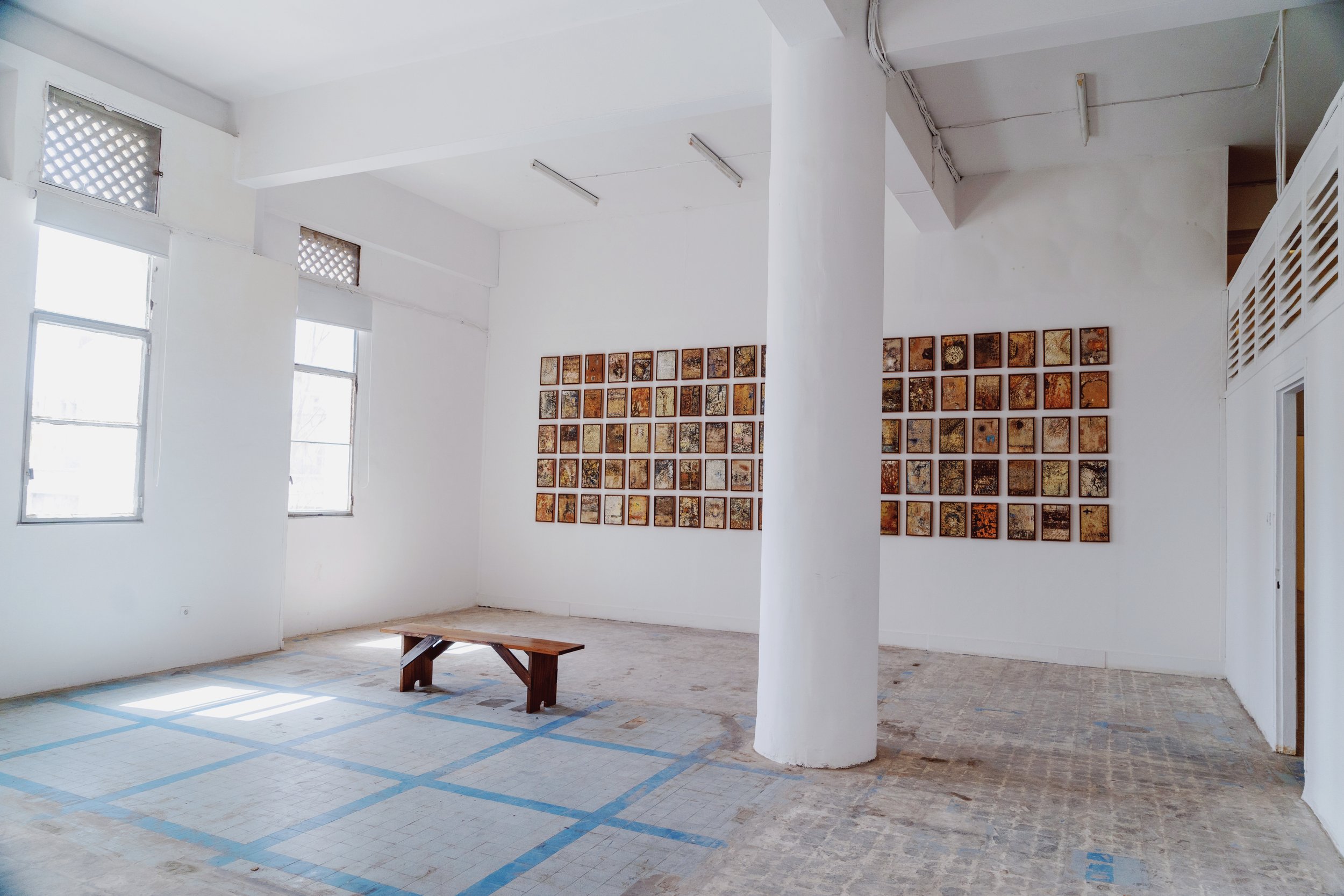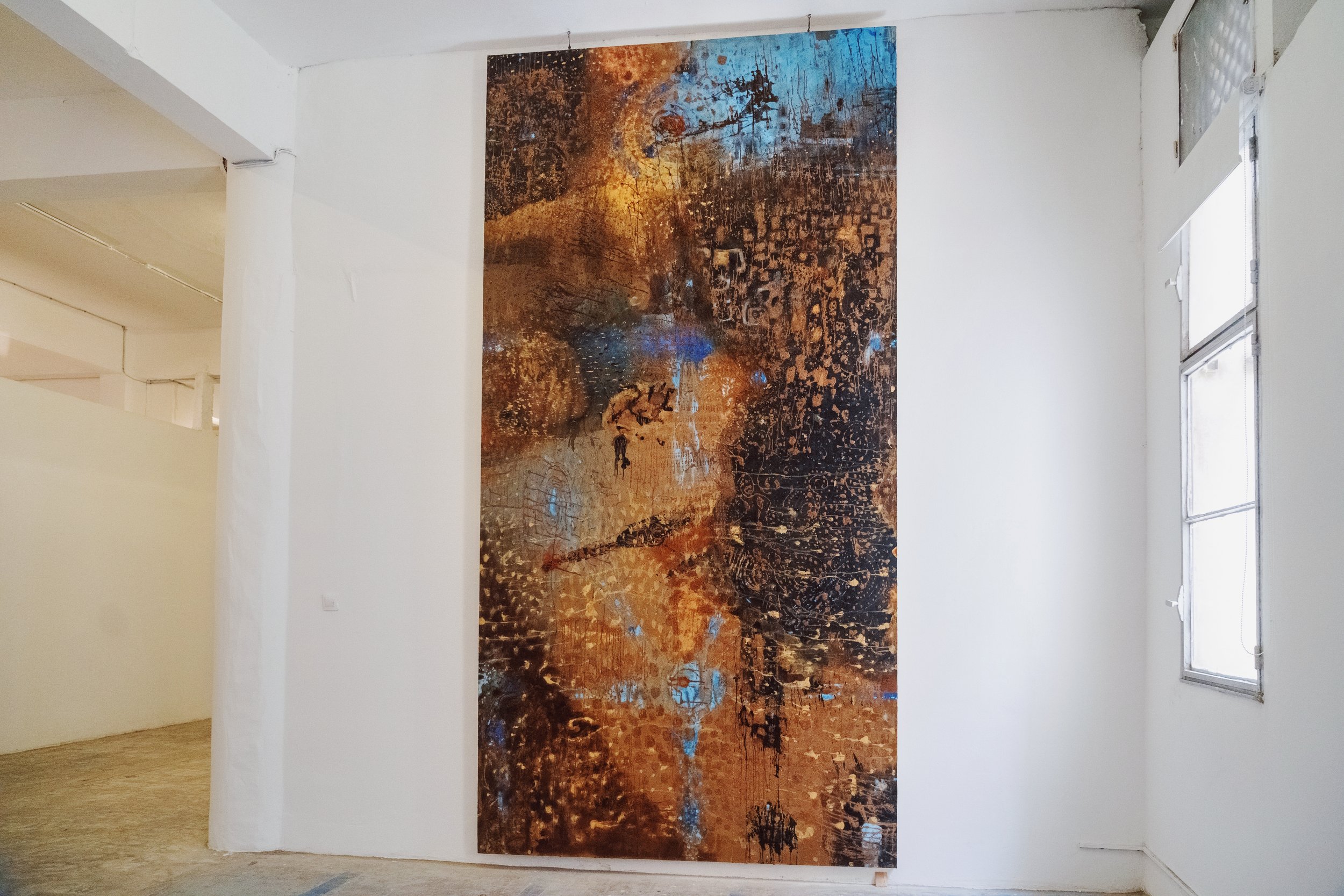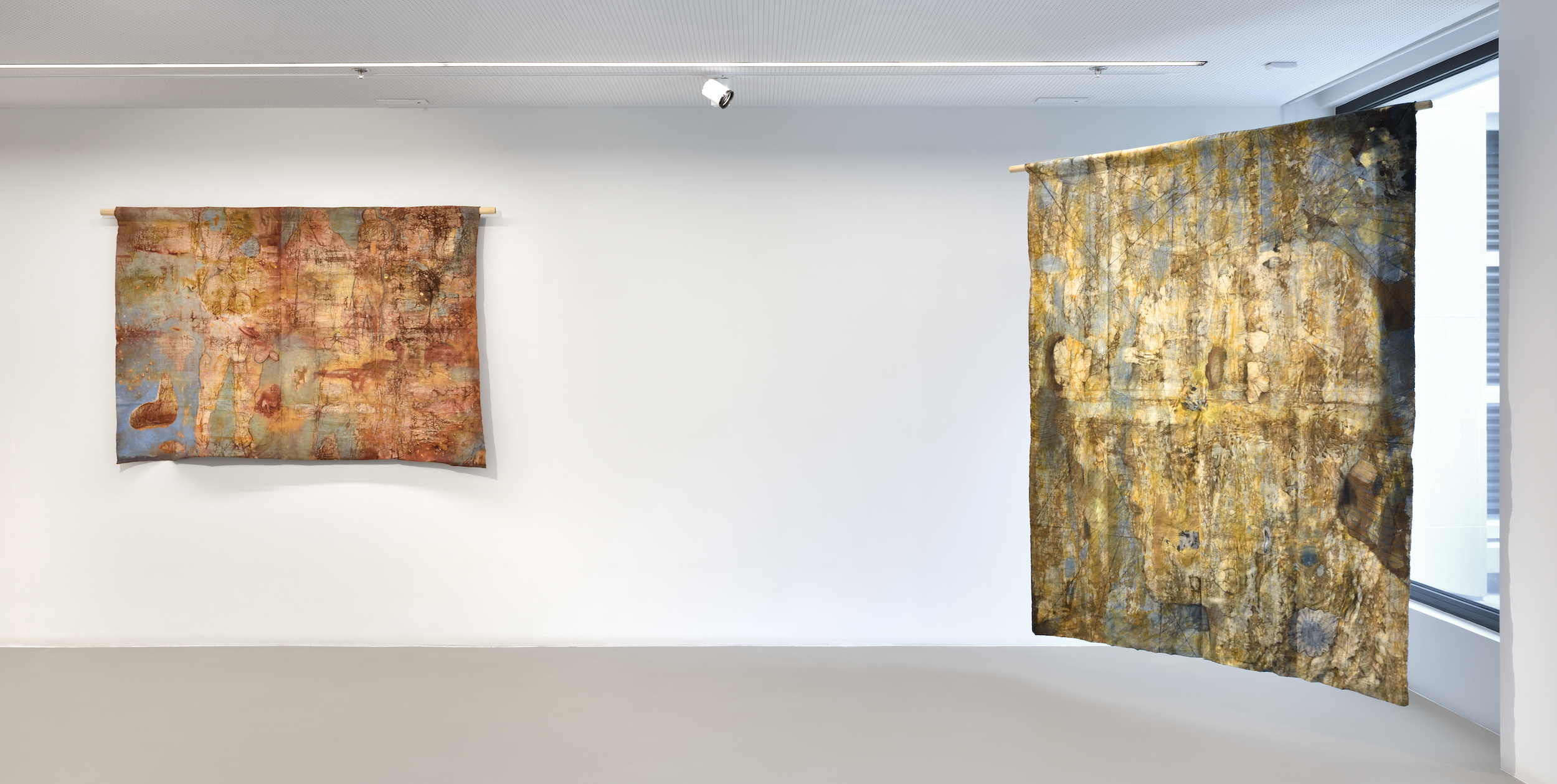Arébénor Basséne
Arébénor Basséne, Solstice Blue 0, 2023, mixed technique on paper
Fascinated by ancient civilizations, whether dreamed of or forgotten, from the great empires of Africa to those of the Mediterranean, it is nevertheless the stuttering of history that gives birth to Arébénor Basséne’s (b.1974,Dakar) artistic practice, built as imaginary witnesses of the past. The ancient sources and materials, such as parchments or archaeological remains, question our conditions of accessing history - that of the original face of a ghostly or fantasized Africa buried under the dust of past centuries. Arébénor Basséne draws inspiration from the first African migrations to Andalusia, as well as the prior ancient Egypt recounted by Cheikh Anta Diop, and the Diola culture of his family. He is interested in those parts of history that are difficult to find in schoolbooks, which he calls "unofficial history", confronted with the narrowness of the Western perspective. Facing the plural narratives of history, its falsifications and its proofs, a tension arises between "historical truth or myth", exuding a pictorial imagination for the artist.
In an era of artists seizing on archives to offer new perspectives of dissemination and enhancement, the work of Arébénor Basséne uses the form of relics that bring to light the narratives of a history that has been restrained. He uses various materials, such as paper, Gum Arabic - the raw material that made the West African coast so attractive to foreign sailors - but also the ink used for Koranic tablets, fouden (henna), wood residues and natural pigments from the Dakar region. While his monumental pieces are abstract, with landscapes of nature devoid of historical reference points, his recent practice integrates figurative elements. On his canvases or papers, which are subjected to the batik technique, soaked in wax and color baths, human forms in movement are drawn - sometimes only limbs: an arm, a foot, a leg. They materialize the anchorage in the ground, and remind us of traditional Diola dances in Casamance, where the dancers frantically strike the ground with their feet.
Similar to archives where historical, linguistic, and cultural clues survive, the figures are exhausted in landscapes of eroded textures. The ochre tones mark the passage of time and are interspersed with blue, a sign of modernity that breaks the monotony of earth colors. Inspired by ancient writings, children's scribbles, street graffiti, rock engravings or the written stammering of the mentally ill, his works are strewn with illegible signs and shapes. The artist places the viewer in the position of the historian, the archaeologist, the psychoanalyst, the scientist, who, in discovering unknown objects, transforms them into objects of study - giving the viewer several ways of interpreting these visual archives. However, this intellectual stalemate cannot be overcome in his pieces - only a sensitive approach to forms, textures and colors is possible.
Works
Biography
© Arebenor Bassene
From Southern Senegal in Casamance, Arébénor Basséne was born in 1974 in Dakar. Fascinated by ancient civilizations, whether dreamed of or forgotten, from the great empires of Africa to those of the Mediterranean, it is nevertheless the stuttering of history that gives birth to Arébénor Basséne’s artistic practice, built as imaginary witnesses of the past.
He holds a master's degree in African civilizations and literature (2012-2013), a double degree in English and African civilizations (2010-2011) from Cheikh Anta Diop University and is agraduate of the National School of Arts of Senegal (1997-2001).
Arébénor Bassène, has had solo exhibitions: "Que je naisse, tout doux, semant", presented by Selebe Yoon at L'Atlas in Paris, France (2023) and "Mots de Neige, Histoires en Sable", at Selebe Yoon in Dakar, Senegal (2021).
His work has also been shown in the following group exhibitions : "Sur le fil : broderies et tissage" organised by 19M initially at the Théodore Monod Museum (IFAN), Dakar, Senegal and in their gallery in Paris, France (2023). He represents the Senegalese Pavilion at the Musée des Civilisations Noires for the Dak'Art Biennial, Dakar, Senegal (2022), Participates in OFF at the Havana Biennial, Cuba (2019), "Junction" at the Théodore Monod Museum (IFAN), Dakar, Senegal (2017), at the group exhibition at the Alliance Française in Addis Ababa, Ethiopia (2017), "Regards sur cours" at the Gorée Institute (2017), in the Dak'Art Biennial (2016) curated by Simon Njami, Dakar, Senegal; "Le Sénégal à Paris" presented by the Maison de l'Afrique at the Rotonde de Montparnasse (2011), at the first Cheikh Anta Diop memorial at the Centre Culturel Français (1995).
He has been nominated for the Norval Sovereign African Art Prize, at the Norval Foundation in Cape Town, South Africa, and is one of the finalists in (2023). He won the Dakar City Council prize (2022), the UEMOA - West African Economic and Monetary Union prize (2016) at the Dark'Art Biennial and the Ministry of Culture prize at the 9th National Plastic Artists' Exhibition (2011).
He lives and works in Dakar, Senegal.
